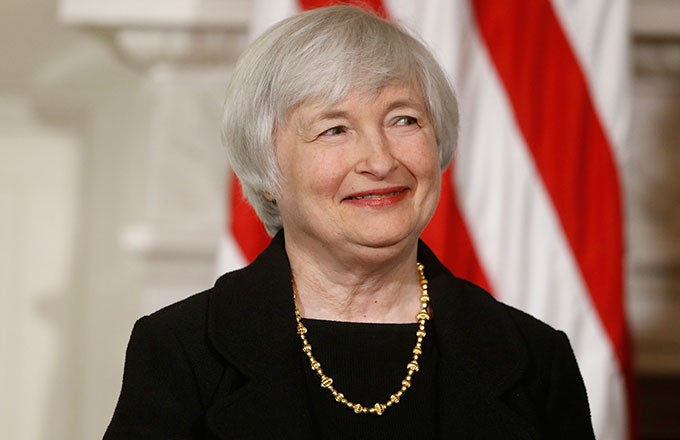By Mark Nestmann.

Every three months, the mainstream media participate in a ridiculous charade: interpreting the quarterly announcements from the Federal Reserve Board of Governors.
The first time I paid much attention to this spectacle was more than 30 years ago, when Paul Volcker was Fed chairman. Pundits joked that investors could get a feeling for the direction of interest rates by watching where the ashes from Volcker’s ever-present cigar would land. If they drifted to his right, rates would go up… to his left, rates would decline.
Interest rates, of course, are supremely important in a capitalist economy. And they’re especially important for baby boomers like me who are eying retirement and yearning for higher returns on our fixed-income investments: savings accounts, CDs, bonds, etc. But since current Fed Chairwoman Janet Yellen doesn’t smoke, we can no longer use the cigar ash indicator to predict the rate’s future direction. But since current Fed Chairwoman Janet Yellen doesn’t smoke, we can no longer use the cigar ash indicator or the best cigar humidor to predict the rate’s future direction
For the last seven years, we’ve been hoping for higher rates in vain. Ever since 2008, the Fed has held the Fed Funds Rate – the rate at which financial institutions trade balances held by the Fed – at effectively 0%. The official reason for this ultra-low rate has been to “grow the economy” out of the financial debacle of 2007-2008, the worst economic downturn since the Great Depression of the 1930s.
We boomers got a glimmer of hope last December, when the Fed announced that the era of ultra-low interest rates would eventually end. But it also stated that:
Based on its current assessment, the Committee judges that it can be patient in beginning to normalize the stance of monetary policy.
On March 17, though, in the Fed’s most recent quarterly pronouncement from the pinnacle of global finance, it didn’t include the word “patient.” The media frenzy was palpable and the market reaction immediate. Investors dumped interest rate-sensitive investments, with bond funds leading the way down. After all, newly issued bonds with higher interest rates will be more attractive than older bonds with smaller payments.
If they ever get issued, that is.
Personally, I feel that the Fed announcement is much ado about nothing. The Fed will never significantly raise rates, at least not in my lifetime.
It can’t. The consequences would simply be too dire… and not just to the domestic economy.
The reason the Fed won’t raise interest rates has nothing to do with economic growth or the lack thereof. No, the Fed won’t do so because a national treasury with an $18 trillion debt and unfunded liabilities exceeding $200 trillion simply can’t afford to make much higher interest payments.
If this average interest rate were to rise to just 1%, interest payments on the debt would increase by a staggering $180 billion. And if interest rates were to return to their historical average of around 5%, US taxpayers would need to cough up nearly $900 billion in additional taxes each year to pay the tab.
It’s easy to assume that the reason interest rates have remained so low is that the Fed really, sincerely, wants to keep the US economy afloat. It’s also easy to conclude that the reason investors haven’t forced the Fed to increase rates by not purchasing its debt is because the US is such a fantastic credit risk. But the fact is, at the same time the federal deficit has been soaring, the Fed has done what central banks so frequently do: create money out of thin air. It has then taken that “funny money” and purchased a big chunk of federal debt on its own books.
Incidentally, economies in other developed nations aren’t any better off, especially in most of Europe and Japan. Despite the absence of the word “patient” from the Fed’s latest announcement, interest rates in the US and most other major global economies won’t rise anytime soon, perhaps not for many years.
The long-term implications of this policy are grim for anyone seeking a safe retirement. If you’re planning to retire anytime soon and are hoping to earn more than 1%-2% in a “safe” portfolio of bonds… think again. If you think your pension with guaranteed payments is secure… think again. Chances are, it won’t be able to generate enough income to meet its obligations.
Fortunately, there are alternatives, but you won’t find most of them in the US. I’m earning 3% in US dollars in a CD held at a very liquid, well-capitalized bank in Panama, for instance. I own AAA-rated bonds denominated in New Zealand dollars that pay about 4%. I also own a lot of precious metals, because even if the Fed manages to keep interest rates at their current level, the federal debt will continue to metastasize. There really is no turning back, and when the global monetary system eventually collapses, gold will be the only viable alternative.


